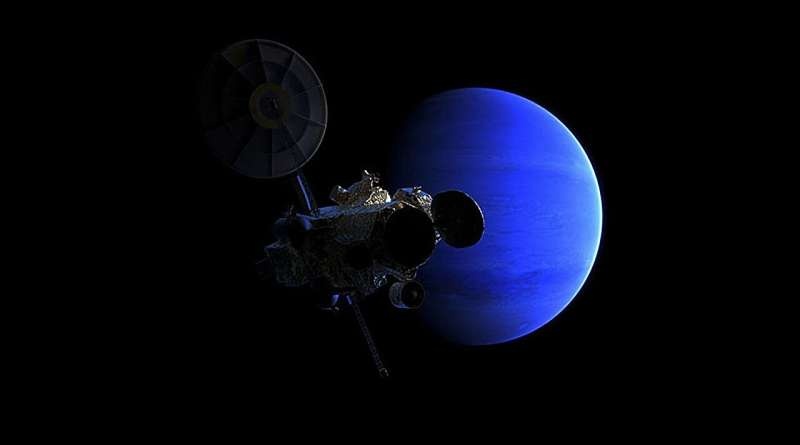An ambitious mission concept called Arcanum is taking shape, aiming to send a spacecraft to study both the planet Neptune and its intriguing moon Triton. This mission, with its three-part design, could provide unprecedented insights into the farthest reaches of our solar system.

Journeys to the Interior› Frontier
The outer planets in our solar system have been shrouded in mystery for centuries. The last time any spacecraft got close to Neptune was in the late 1980s, when Voyager 2 whizzed past it.
Many years later, and thanks to major technological advances, a new mission called Arcanum is in the works to revisit this mysterious world as well as its enigmatic moon Triton. This is a proposed mission concept, led by researchers at ConEx Research and University College London, that could be one of the first to reveal understandings about our Solar System that have evaded us for half a century.
What sets Arcanum apart, and is a key pillar to the mission, us its all-encompassing protocol. Rather than a single spacecraft, it is instead envisioned as being implemented as a three-part system with each component contributing to different facets of understanding the Neptune system.
The Arcanum Mission: Trifecta of Discovery
The Arcanum initiative is composed of three unique parts — each serving a different niche.
1. Somerville: The Orbiter
The Somerville orbiter will be the primary scientific means of studying Neptune from orbit. Somerville is kitted out with a camera, spectrometers, and even its own telescope so that we can peer beyond the planet’s atmosphere to what lies beneatherno pun intended).
2. Next up, Tenzing: The Orbital Mover.
The orbiter Tenzing will help place the lander stage in a safe touchdown location on Triton. However, it needs to do more than just that. In its second phase, Tenzing will be a simple relay station that sends data from the lander to Somerville to keep the data flow from the surface to Earth as smooth as possible.
3. Bingham: The Lander
The Bingham lander will land on Triton, an enigmatic moon Equipped with a variety of scientific tools, such as cameras, seismometer and mass spectrometer, Binghams instruments will look at the surface environment and collect critical data on Tritons potential subsurface ocean and signals of geologic activity.
Conclusion
The Arcanum mission is a major move for us beyond the inner solar system. This pioneering mission, which will use the powers of a relay satellite, a manipulator and a lander all in concert, could radically alter our comprehension both of Neptune as well as its moon Triton. In 2030, the Arcanum mission will undertake a 2045 rendezvous with Neptune and change what we know about the outermost reaches of this small slice of space but likely be a stepping stone to more meaningful discoveries and an increased understanding of our planetary outpost.
